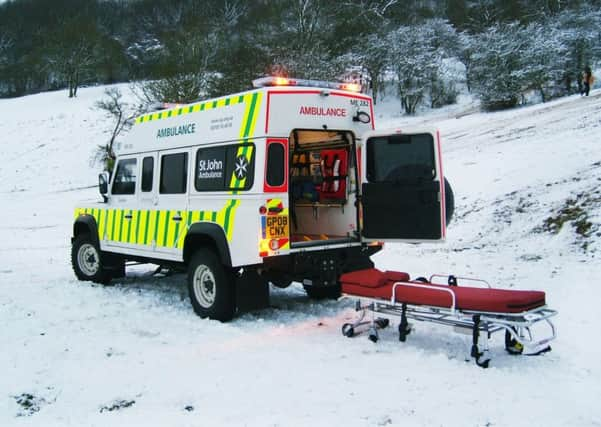ST JOHN AMBULANCE: How to deal with frostbite


With frostbite the tissues of the extremities – usually the toes and the fingers – freeze due to low temperatures.
In severe cases, it can lead to a permanent loss of sensation and, eventually, tissue death and gangrene as the blood vessels and soft tissues become irreversibly damaged.
Advertisement
Hide AdAdvertisement
Hide AdFrostbite usually occurs in freezing or cold and windy conditions.
People who cannot move around to increase their circulation are particularly susceptible.
Symptoms might include:
• ‘Pins and needles’ to begin with.
• Pallor (paleness) followed by numbness.
• Hardening and stiffening of the skin.
• A colour change to the skin of the affected area: first white, then mottled and blue. On recovery, the skin may be red, hot, painful and blistered. Where gangrene occurs, the tissue may become black due to the loss of blood supply.
Follows these simple steps:
• Advise the casualty to put their hands under their armpits and move him into warmth before you thaw the affected part further.
Advertisement
Hide AdAdvertisement
Hide Ad• Once inside, gently remove gloves, rings and any other constrictions such as boots. Warm the affected part with your hands, in your lap or continue to warm them in the casualty’s armpits. Avoid rubbing the affected area as this can damage the skin and other tissues.
• Place the affected parts in warm water at around 40˚C (104˚F). Dry carefully and apply a light dressing of dry gauze bandage.
• Raise the affected limb to reduce swelling. An adult may take the recommended dose of paracetamol and a child may take the recommended dose of paracetamol syrup (not aspirin).
• Take or send the casualty to hospital.
Do not:
• Put the affected part near direct heat.
• Attempt to thaw the affected part if there is a danger of it refreezing.
• Allow the casualty to smoke.
Advertisement
Hide AdAdvertisement
Hide Ad• For those looking for quick, easily accessible first aid information, the St John Ambulance app is available free on smartphones and the website (www.sja.org.uk) offers demo videos, an interactive game, and lots of free advice. For more information about first aid courses please call 0303 003 0101.
---
Don’t miss out on all the latest breaking news where you live.
Here are four ways you can be sure you’ll be amongst the first to know what’s going on.
1) Make our website your homepage
2) Like our Facebook page
3) Follow us on Twitter
4) Register with us by clicking on ‘sign in’ (top right corner). You can then receive our daily newsletter AND add your point of view to stories that you read here.
And do share with your family and friends - so they don’t miss out!
Always the first with your local news.
Be part of it.